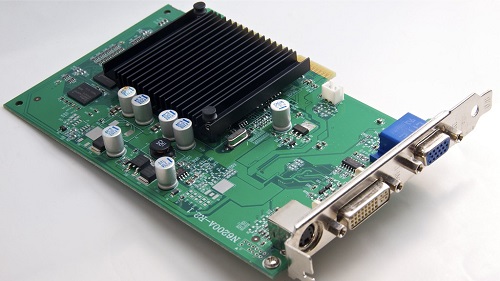Video Card Definition
All of the processing is done by CPU so to give a break to CPU a video card is used which is used to process the graphic portion. So to run program efficiently we use video cards as all the programs thesedays are graphic oriented. Video cards can speed up 2D and 3D rendering also known as graphics accelerators. Some on the program are dependent on video cards if the video card is not installed on your system then those program will not support. There are some of the libraries which are used by video card like OpenGL and DirectX libraries which include commands for manipulating graphics so that programmer can easily include them in his code. Commands like rotating of objects, morphing polygons, creating shadow and casting lights. By using the above mentioned libraries it is easy for programmer to develop graphically-oriented programs. In that case supported video card should be include to run the program. Cads are installed in PCI and AGP slots in the back of computer, but some computers have their own video card installed.

Function of Video cards
- Video Acceleration: All video cards have built in computing capability. Acceleration done is like: main computer sends general instruction to card that describing graphic objects and then microprocessor of the card paints the information faster than computer microprocessor in images form of two or three dimension. Then application program produces images on the computer runs faster as a result.
- Video Memory: Video cards have their own storage called Video Random Access Memory which store video data bits in it and frees up the main memory of computer. The amount of video memory tells the size of the screen it supports, it also dictates the resolution of the images and the maximum number of colours card can generate.
- Multiple Displays: By having multiple sockets to connect can display more than one screen at the same time. This is healthy feature if you giving presentation. For that you have to prepare with small conventional screen and organize your material and video projector to show content to audience. The graphic card automatically maps the screen area according to user needs.
- Video Capture: This is differ from other graphic cards by accept video signals from video player and other sources. Some business companies use services like Converts old VCR tapes to new DVD to read legacy analog source and get them onto a PC for digital storing and editing.
Types of Video Cards
- PCI: PCIs are connect to white slots of motherboard and they have been common on motherboard from the 1990s because they replace ISA standard. Also has been replaced by the newer PCI express.
- AGP: AGP introduced because they allowed four times the bandwidth over PCI. Now AGP video cards are designed to work with the newer version of AGP like AGP 2.0 and 3.0.
- PCI Express: this is the PCIs latest technology designed that replace AGP and work with the main board systems which allow large amount of bandwidth to be transferred which give results of new level of graphics and system performance.


